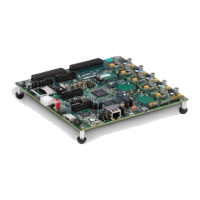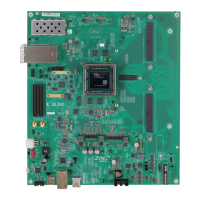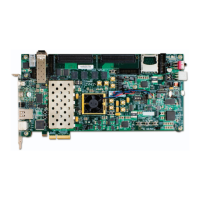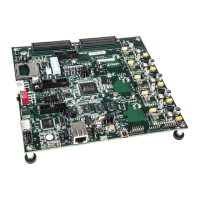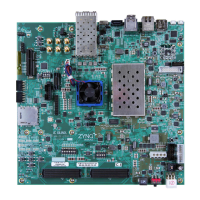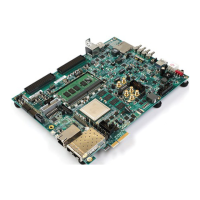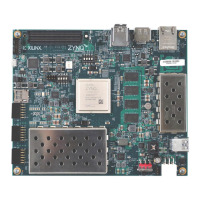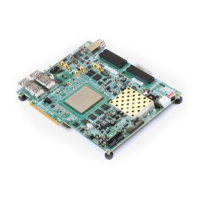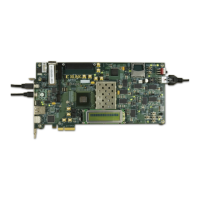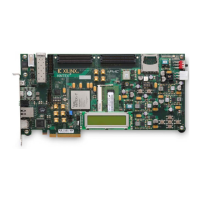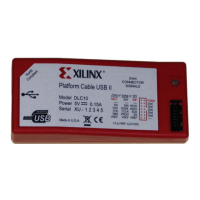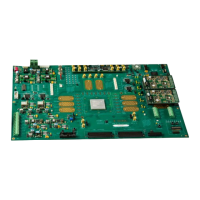Zynq-7000 AP SoC and 7 Series FPGAs MIS v4.1 598
UG586 November 30, 2016
www.xilinx.com
Chapter 4: LPDDR2 SDRAM Memory Interface Solution
• Event Delay – The dedicated PHY has internal counters that require this field to specify
the delay values loaded into these counters. The event delay is in units of LPDDR2
SDRAM clock cycles. The MIG IP core does not use these internal counters; therefore,
this field should be all zeros.
• Activate Precharge – The dedicated PHY has internal counters that require this field to
specify the type of LPDDR2 command related to the event delay counter. Valid values
are:
°
00: No action
°
01: Activate
°
10: Precharge
°
11: Precharge/Activate.
The MIG IP core does not use these internal counters; therefore, this field should be all
zeros.
Table 4-23: Auxiliary Output Attributes
Attribute Type Description
MC_AO_WRLVL_EN Vector[3:0]
This attribute specifies whether or not the related Aux_Output is active
during write leveling as specified by the PC_Enable_Calib[1] signal. For
example, this attribute specifies whether ODT is active during write
leveling.
WR_CMD_OFFSET_0 Vector[5:0]
This attribute specifies how long in LPDDR2 SDRAM clock cycles after the
associated write command is executed that the auxiliary output becomes
active. For example, this attribute ensures that the ODT signal is asserted
at the correct clock cycle to meet the JEDEC ODTLon and ODTLoff
specifications.
WR_DURATION_0 Vector[5:0]
This attribute specifies how long in LPDDR2 SDRAM clock cycles the
auxiliary output remains active for a write command. For example, this
attribute ensures that the ODT signal is asserted at the correct clock cycle
to meet the JEDEC ODTLon and ODTLoff specifications.
RD_CMD_OFFSET_0 Vector[5:0]
This attribute specifies how long in LPDDR2 SDRAM clock cycles after the
associated read command is executed that the auxiliary output becomes
active.
RD_DURATION_0 Vector[5:0]
This attribute specifies how long in LPDDR2 SDRAM clock cycles the
auxiliary output remains active for a read command.
WR_CMD_OFFSET_1 Vector[5:0]
This attribute specifies how long in LPDDR2 SDRAM clock cycles after the
associated write command is executed that the auxiliary output becomes
active.
WR_DURATION_1 Vector[5:0]
This attribute specifies how long in LPDDR2 SDRAM clock cycles the
auxiliary output remains active for a write command.
RD_CMD_OFFSET_1 Vector[5:0]
This attribute specifies how long in LPDDR2 SDRAM clock cycles after the
associated read command is executed that the auxiliary output becomes
active.

